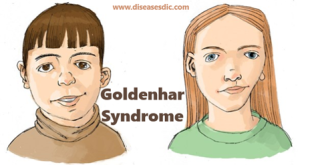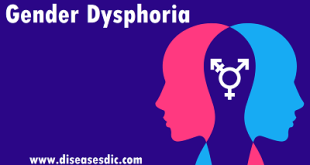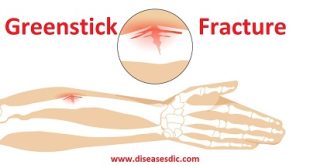Definition
Gorham’s Disease, also known by the name of Disappearing Bone Disease, is an extremely uncommon medical condition of the skeletal system which does not have a specific etiology in which there is an uncontrolled proliferation of lymphatic channels within the bone causing resorption and replacement of bone fibrosis. Gorham’s Disease or Disappearing Bone Disease does not have any clear cut treatment and only treatments conducted are clinical trials which mixed results.
Anteroposterior radiograph of the pelvis in a patient with Gorham’s disease
Epidemiology
Gorham’s disease is extremely rare and may occur at any age, though it is most often recognized in children and young adults. It strikes males and females of all races and exhibits no inheritance pattern. The medical literature contains case reports from every continent.
Because it is so rare, and commonly misdiagnosed, exactly how many people are affected by this disease is not known. The literature frequently cites that fewer than 200 cases have been reported, though a consensus is building that many more cases occur around the world that have been reported.
Risk factors
- The risk factors for the development of Gorham-Stout Disease are not clearly known
- It has been suggested that injury or trauma may be a risk factor
Causes
- The specific cause of Gorham’s disease remains unknown. Bone mass and strength are obtained and maintained through a process of bone destruction and replacement that occurs at the cellular level throughout a person’s life.
- Cells called osteoclasts to secrete enzymes that dissolve old bone, allowing another type of cells called osteoblasts to form new bone. Except in growing bone, the rate of breakdown equals the rate of building, thereby maintaining bone mass. In Gorham’s disease, that process is disrupted.
- Gorham and Stout found that vascular anomalies always occupied space that normally would be filled with new bone and speculated that the presence of angiomatosis may lead to chemical changes in the bone.
- Gorham and others speculated that such a change in the bone chemistry might cause an imbalance in the rate of osteoclast to osteoblast activity such that more bone is dissolved than is replaced.
- The Gorham-Stout syndrome may be, essentially, a monocentric bone disease with a focally increased bone resorption due to an increased number of paracrine or autocrine stimulated hyperactive osteoclasts. The resorbed bone is replaced by a markedly vascularized fibrous tissue.
Symptoms
Symptoms of Gorham’s disease may develop quickly, requiring aggressive treatment, but may progress more slowly over time, with periods of remission or reversal with treatment. In some individuals, the disease may not cause any symptoms.
Typically, Gorham’s disease first presents as swelling and pain with no obvious cause. Some people are diagnosed after a fracture occurs, with radiography showing bone loss.
Symptoms of Gorham’s disease can include:
- Acute onset of localized pain and swelling
- Reduced range of motion and generalized weakness
- Increased risk of fracture
Difficulty breathing and chest pain may be present if the disease is present in the ribs.
When Gorham’s disease affects the maxillofacial (jaw) bones, symptoms can include jaw pain, loose teeth, fractures, and facial deformity
Gorham disease of the mandible
Some people with Gorham’s disease may develop pleural effusion, a condition where there is ‘water on the lungs’ due to the build-up of excess fluid between the pleura or thin membranes that line the lungs and the inside of the chest cavity. Because the pleura help to lubricate and are important for healthy respiratory function, Gorham’s disease can lead to respiratory distress (i.e. breathing problems) and even respiratory failure.
Gorham disease of craniofacial
Gorham’s disease of skull base
Complications
Complications that may arise in individuals with Gorham-Stout Disease may include:
- Pathological fracture- A medical condition resulting in broken bones, due to bone weaknesses
- Pleural effusion- Accumulation of excess fluid between the layers of the pleura outside the lungs
- Pericardial effusion- Accumulation of excess fluid between the pericardium (lining of the heart) and the heart
- Chylous ascites- The leakage of chyle fluid into the abdominal cavity from the duct in the lymphatic system
- Hemangioma- The formation of non-cancerous tumors caused by the formation of new blood vessels
- Bone lysis, or the destruction of bone due to removal or loss of calcium
- Restricted movement
- Neurological problems with spinal cord involvement
- Disfigurement
- Distress and depression
Diagnosis and test
There is no one test that can positively diagnose Gorham-Stout disease. Your child’s physician will conduct a thorough medical exam and ask questions to create a detailed medical history.
Your child’s physician may also recommend one or more of the following tests:
- Magnetic resonance imaging (MRI)
- CT scan
- Biopsy
MRI or CT scans of a patient with Gorham-Stout will show bone that has disappeared, appears to have holes in it or looks hollow.
Treatment
Your child’s specific treatment plan depends on several factors, including the part of the body affected, severity and progression of the disease and related complications.
Medication
Anti-vascular and immunosuppressant medications have proven effective for slowing and even reversing the damaging effects of Gorham-Stout. Boston Children’s offers a clinical using these medications, which target the lymphatic vessels that grow abnormally and disrupt the body’s normal bone regeneration process:
Sirolimus: This oral medication suppresses the immune system and targets lymphatic vessel formation. Also known as rapamycin, it has been found to effectively slow the progression of Gorham-Stout, reduce symptoms and complications and generally stabilize the disease.
Interferon alfa-2b: This medication inhibits the formation of lymphatic vessels and improves symptoms.
Bisphosphonates: This is a class of medications designed for osteoporosis that work to slow bone loss and can help to stabilize Gorham-Stout disease.
Surgery
Surgery alone cannot cure Gorham-Stout. However, your child’s physician may recommend a surgical procedure to stabilize or remove affected bone or to treat symptoms and complications related to the disease. Your child may need to take a course of medication in conjunction with or before surgery to successfully stabilize the disease. Surgical outcomes are improved when the disease is under control at the time of surgery.
- Surgical recommendations may include:
- Spinal reconstruction or spinal fusion surgery to stabilize affected vertebrae.
- Bone graft surgery, which in some cases can stimulate the formation of new bone.
Surgical removal of affected bone, which may be replaced by the bone graft surgery above or with an artificial, or prosthetic, bone implant.
Radiation therapy
Your child’s physician may recommend radiation to treat pain and other symptoms of Gorham-Stout. Radiation is also an effective treatment for complications of the disease, such as chylothorax, a leakage of lymphatic fluid into the chest.
However, due to delayed side effects of radiation therapy, it isn’t recommended as first-line therapy.
Prognosis
The course of Gorham’s disease varies among affected people. The rate of progression and long-term outlook (prognosis) can be hard to predict. The disease can stabilize after a number of years, go into spontaneous remission (improve without treatment), or be fatal. Recurrence can also occur. In most cases, bone resorption stops on its own after a variable number of years.
When just the limbs or pelvis are affected, there generally is no threat to life. However, pulmonary involvement with chylothorax (a type of pleural effusion) or spinal involvement (causing neurological complications) may mean a poor prognosis, and can even lead to death.
Prevention
- Presently, there are no effective methods or guideline available for the prevention of Gorham-Stout Disease
- Active research is currently being conducted to explore the possibilities for treatment and prevention of disorders such as GSD
- Regular medical screening at periodic intervals with tests and physical examinations are strongly recommended
 Diseases Treatments Dictionary This is complete solution to read all diseases treatments Which covers Prevention, Causes, Symptoms, Medical Terms, Drugs, Prescription, Natural Remedies with cures and Treatments. Most of the common diseases were listed in names, split with categories.
Diseases Treatments Dictionary This is complete solution to read all diseases treatments Which covers Prevention, Causes, Symptoms, Medical Terms, Drugs, Prescription, Natural Remedies with cures and Treatments. Most of the common diseases were listed in names, split with categories.







